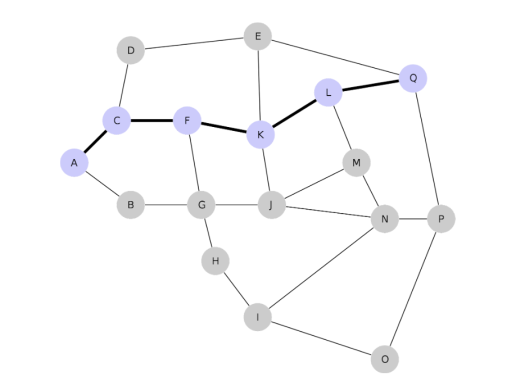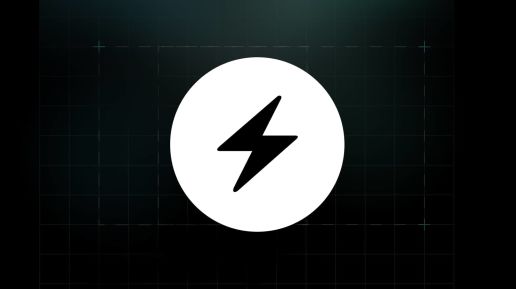Disclaimer: Content about scaling solutions and projects is not an endorsement. All content is solely for educational purposes.
For billions of users to hold and transact in bitcoin, solutions are needed to make everyday transactions convenient, economical, and secure. On its own, the Bitcoin mainchain cannot facilitate enough economic activity to make it a scalable blockchain. In pursuit of increasing Bitcoin’s widespread adoption, the Lightning Network protocol represents a breakthrough innovation that could be the foundation of borderless and bankless cryptocurrency payments.
What is the Lightning Network?
The Lightning Network is a layer 2 protocol built on top of the Bitcoin blockchain. Lightning utilizes smart contract functionality as a decentralized network to enable instant Bitcoin payments.
Why Bitcoin’s Mainchain Is Not Fit for Everyday Payments
Inherently, Bitcoin’s mainchain is inadequate for high volumes of peer-to-peer exchanges.
Bitcoin’s base layer can only process about seven transactions per second. This is exponentially less than enterprise payment processes, which can handle up to 24,000 transactions per second.
Bitcoin block space is also extremely limited, but demand is high. This makes transacting on Bitcoin remarkably expensive when the network is congested. In some cases, the transaction fees on the Bitcoin network exceed the total value of the transaction itself. At peak times, transaction fees can exceed $50.
Bitcoin transactions also take approximately 10 minutes to be confirmed on-chain. However, settlement finality can drastically increase to upwards of one hour in congested conditions.
Ultimately, these circumstances make Bitcoin uneconomical for everyday payments.
How Lightning Network Improves Bitcoin
Lightning Network makes Bitcoin a practical means for everyday transactions by improving three key aspects.
Faster Bitcoin Transactions. Lightning Network payments settle in real time. Finality can be measured in seconds rather than minutes or hours. This makes Bitcoin payments practical for vendors and individuals who want quick settlements.
Cheaper Bitcoin Transactions. Lightning Network fees are negligible. The base fee is just 1 Satoshi (0.00000001 BTC), which is roughly equal to 4 cents. Unlike Bitcoin’s mainchain, fees on Lightning remain low and constant due to its high throughput.
Scalability. In theory, Lightning can process one million transactions every second. This dramatically surpasses any legacy payment system, and makes Lightning a valuable scaling solution for Bitcoin.
How Does Lightning Network Work?
Lightning Network makes cheap and efficient peer-to-peer payments possible by utilizing a decentralized layer for off-chain transactions. Much of how the Lightning Network works was laid out in the LN whitepaper published by its founders in 2016.
Since Lightning was developed for the movement of small values of Bitcoin (often referred to as micropayments), these transactions do not require the full, robust security and operability of Bitcoin's base. Alternatively, Lightning uses a hybrid of real Bitcoin blockchain transactions and smart contracts to create a new network specifically for micropayments.
Multisignature payment channels
Instead of sending every transaction to Bitcoin for confirmation, Lightning creates a multisignature channel between two parties that acts as reusable transaction routes.
To start a payment channel, funds from each party are placed in a two-way multisignature address. This action is then sent to the Bitcoin blockchain.
Once the payment channel is opened, each party can send funds back and forth near instantaneously and for fractions of the cost of a normal Bitcoin transaction. Each time a payment is made, both parties sign off on the updated balance of funds. Over time, the Lightning channel maintains a record for tracking the entirety of its transfer history.
When the payment channel is eventually closed, the final balances for each party are recorded as a single closing transaction and sent back to the Bitcoin blockchain. This means that with a sufficient amount of liquidity, an infinite amount of Lightning transactions can occur in a payment channel. Moreover, only 2 transactions will be processed on the Bitcoin mainchain (one transaction for opening the Lightning Network channel and another for closing it).
Network interconnectivity

Source: Kjerish / Wikimedia Commons / CC-BY-SA-3.0
If a Lightning Network participant is someone you transact with often, it is advantageous to set up a direct channel.
When sending one-off payments or transacting with participants who you interact with less frequently, interconnected pathways make more sense than a new direct channel.
Routing transactions via indirect pathways allow users to send funds through others’ existing channels within the network.
For example, you and a party who you wish to transact with may have 2nd, 3rd, or 4th degree mutual connections within the Lighting Network. These users can serve as middlemen to route and help facilitate your transaction.
Using indirect pathways does not have a major effect on the security or cost of transacting on the Lightning Network.
Lightning Network Use Cases
While the utility of the Lightning Network is still in its infancy, there are already a number of common applications that have shown success.
Peer-to-peer payments
Individuals can transfer funds quickly and economically without the need of a trusted third party. Lightning Network is an alternative to traditional mobile payment service providers aimed towards settling transactions with family and friends.
Vendor payments
Goods and services can be paid for in BTC over Lightning. Already, Lightning Bitcoin has proven that it can be employed in the same manner as traditional credit card networks. With supporting infrastructure growing every day, Lightning users can make Bitcoin payments at nearly half a million online and retail stores.
Banking the unbanked
Bitcoin’s core philosophy is financial inclusion. With the Lightning Network, millions of people in the developing world will be able to send and receive money without legacy banking infrastructure. There are many free, open-source applications that connect users to the Lightning Network with just a mobile device and an internet connection.
How to Start Using Lightning Network
To use the Lightning Network, you will need to buy Bitcoin that is on the Lightning Network, or manually move Bitcoin to Lightning via a channel. There are multiple on-ramps that make accessing Lightning Network convenient.
Here are two of the easiest methods for acquiring Bitcoin for the Lightning Network:
Buy Lightning Network Bitcoin from an exchange
There are multiple centralized exchanges that allow for deposits to and withdrawals from the Lightning Network. A few of the leading exchanges include:
- Kraken - Kraken accounts must be verified to an Intermediate or Pro level account to send Bitcoin to the Lightning Network.
- Okcoin - Okcoin supports withdrawals and deposits from 0.000001 BTC (~$0.02) up to .05 BTC (~ $1000).
- Bitfinex - Bitfinex allows users to deposit, withdraw, and convert between BTC and LN-BTC.
Note that if you buy Lightning Network Bitcoin from an exchange, you will need a Lightning-enabled wallet to withdraw funds and participate in payment channels.
Create a Lightning Network wallet
Lightning Network Bitcoin can also be purchased from platforms that provide ways to store, send, and receive funds. Lightning wallets can establish channels, determine payment routes, and manage channel openings and closings. Choosing a wallet is very subjective, and depends on an individual’s preferences for wallet type, security, user experience, ease of use, and other factors.
Here are some of the most well-known Bitcoin wallets for the Lightning Network:
- Strike - A mobile payments application for businesses and individuals that operates on the Lightning Network.
- CashApp - A mobile payment platform for US users to send and receive Bitcoin over the Lightning Network.
- Paxful - A global peer-to-peer platform with an integration for the Bitcoin Lightning Network.
- Muun - A self-custodial wallet for Bitcoin and Lightning on iOS and Android devices.
- Wallet of Satoshi - A custodial wallet for sending and receiving Lightning payments.
Lightning Network: Practical and Scalable Bitcoin Payments
The Lighting Network layer is one of the most active layers in Bitcoin DeFi.
Payment channels are tremendously helpful in freeing up block space from millions of small transactions that can clog the network. Removing these transactions from the base layer greatly increases Bitcoin’s throughput, and results in more economic activity per block.
Lightning is a path forward for Bitcoin’s scalability. Even if Bitcoin’s main blockchain experiences significant congestion, Lightning Network users can still complete near-instant payments at low costs.
Payment channels provide seamless, secure, and cheap means of transferring Bitcoin without the issues of Bitcoin’s expensive fees and slow finality.
Lightning allows Bitcoin to be competitive with traditional payment rails for individuals and businesses alike. The Taro protocol has also transformed Lightning Network into a multi-asset platform, with assets such as security tokens and stablecoins.
Adoption of the Lightning Network is on the rise. As the network effects increase, Lightning will become even more practical and scalable for Bitcoin users around the world.

